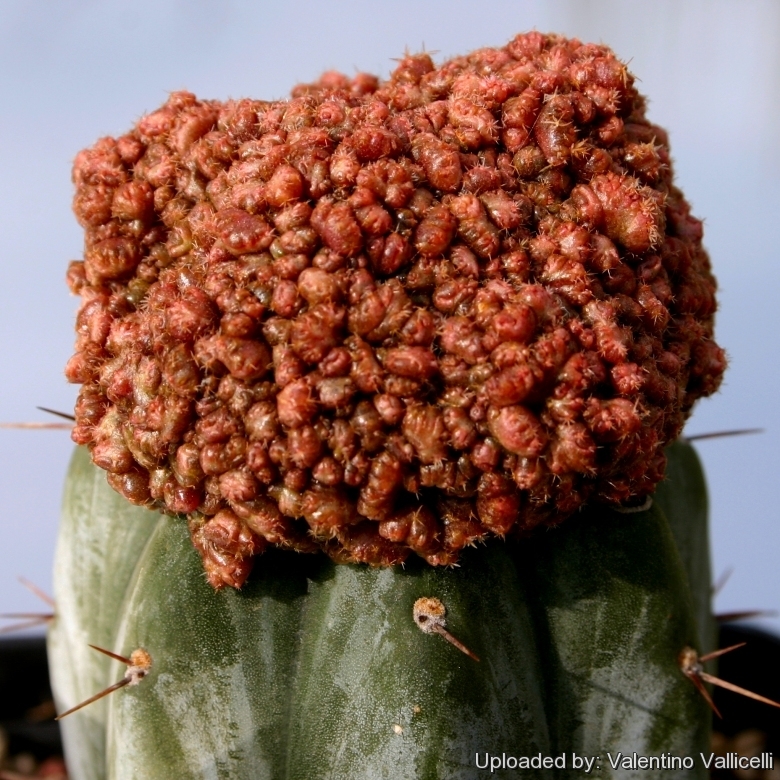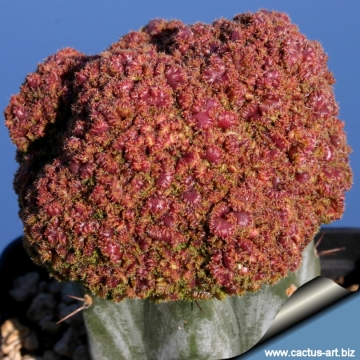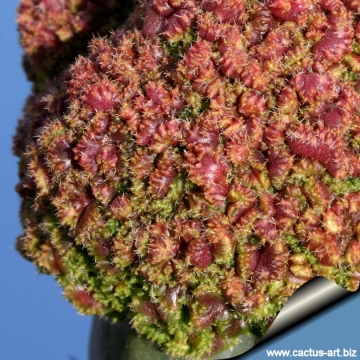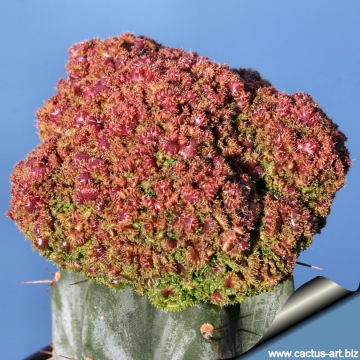
Mammillaria sp. f. xylocephala Photo by: Valentino Vallicelli
Origin and Habitat: The origin of this nursery produced cultivar is unknown.
Synonyms:
Description: This tiny monstrous Mammillaria makes a nice and tangled cluster of very fine, crowded crests. Brownish-green or purple in full sun exposure with minuscule soft white spines. It can be grown only grafted on columnar cacti.
 Mammillaria sp. f. xylocephala Photo by: Cactus Art
Mammillaria sp. f. xylocephala Photo by: Cactus Art Mammillaria sp. f. xylocephala Photo by: Cactus Art
Mammillaria sp. f. xylocephala Photo by: Cactus Art Mammillaria sp. f. xylocephala Photo by: Cactus Art
Mammillaria sp. f. xylocephala Photo by: Cactus ArtSend a photo of this plant.The gallery now contains thousands of pictures, however it is possible to do even more. We are, of course, seeking photos of species not yet shown in the gallery but not only that, we are also looking for better pictures than those already present.
Read More... Cultivation and Propagation: Although regarded as a choice and difficult plant is not too difficult in a greenhouse. It is almost always seen as a grafted plant but seems possible to grow it on its own roots too.
Growth rate: Grows quite slowly.
Soil: Use mineral well permeable mineral soil with little organic matter (peat, humus).
Exposure: They need a good amount of light shade to full sun this help to keep the plants healthy, although slow growth.
Watering: Water sparingly from March till October (weekly during summertime, if the weather is sunny enough) , with a little fertilizer added. Less or no water during cold winter months, or when night temperatures remain below 10° to prevent root loss. It is sensitive to overwatering (rot prone).
Fertilization: Feeding may not be necessary at all if the compost is fresh then, feed in summer only if the plant hasn't been repotted recently. Do not feed the plants from September onwards as this can cause lush growth which can be fatal during the darker cold months.
Hardiness: Keep perfectly dry in winter at temperatures from 5 to 15 degrees centigrade. (but it is relatively cold resistant and hardy to -0° C, or possibly colder for short periods) In the rest period no high atmospheric humidity!! (Temperature Zone: USDA 9-11)
Propagation: Plants are usually grafted onto column-shaped cacti but proved to be able to produce their own roots if degrafted. Cuttings will take root in a minimum temperature of 20° C (but better in hot weather). Cuttings of healthy shoots can be taken in the spring and summer. Cut the stem with a sharp, sterile knife, leave the cutting in a warm, dry place for a week or weeks (depending on how thick the cutting is) until a callus forms over the wound. Once the callus forms, the cutting may be inserted in a container filled with firmed cactus potting mix topped with a surface layer of coarse grit. They should be placed in the coarse grit only; this prevents the cut end from becoming too wet and allows the roots to penetrate the rich compost underneath. The cuttings should root in 2 to 6 weeks. Large pieces must be placed on the soil surface without burying the plant base down in the soil.














